
Kinabalu National Park: A Haven of Biodiversity and Adventure
Discover the unparalleled beauty and biodiversity of Kinabalu National Park, a UNESCO World Heritage site and home to Malaysia's highest peak, Mount Kinabalu.
Kinabalu National Park in Malaysia is a UNESCO World Heritage site known for its stunning natural beauty and rich biodiversity. The park is home to Mount Kinabalu, the highest peak in Southeast Asia, which attracts hikers and climbers from all over the world. Whether you are an experienced mountaineer or a casual nature lover, Kinabalu National Park offers a range of activities and sights that will leave you in awe. The park's diverse ecosystem includes over 4,500 species of plants, 326 species of birds, and 100 mammalian species, making it a paradise for nature enthusiasts. The lower montane forest is filled with unique flora, including the world's largest flower, the Rafflesia. As you ascend, the vegetation changes, offering a dynamic and captivating experience for trekkers. Beyond its natural wonders, the park also offers cultural insights. The indigenous Dusun people consider Mount Kinabalu sacred and their cultural heritage adds a layer of depth to your visit. The park's visitor center provides information on local traditions and history, enhancing your understanding of this extraordinary place.
Local tips in Kinabalu National Park
- Book your climbing permit in advance, as only a limited number of climbers are allowed per day.
- Visit during the dry season, from March to September, for the best trekking conditions.
- Hire a local guide to enrich your experience with cultural and ecological insights.
- Wear layered clothing and bring rain gear, as weather conditions can change rapidly.
- Stay hydrated and acclimatize yourself before attempting the summit climb.
Kinabalu National Park: A Haven of Biodiversity and Adventure
Kinabalu National Park in Malaysia is a UNESCO World Heritage site known for its stunning natural beauty and rich biodiversity. The park is home to Mount Kinabalu, the highest peak in Southeast Asia, which attracts hikers and climbers from all over the world. Whether you are an experienced mountaineer or a casual nature lover, Kinabalu National Park offers a range of activities and sights that will leave you in awe. The park's diverse ecosystem includes over 4,500 species of plants, 326 species of birds, and 100 mammalian species, making it a paradise for nature enthusiasts. The lower montane forest is filled with unique flora, including the world's largest flower, the Rafflesia. As you ascend, the vegetation changes, offering a dynamic and captivating experience for trekkers. Beyond its natural wonders, the park also offers cultural insights. The indigenous Dusun people consider Mount Kinabalu sacred and their cultural heritage adds a layer of depth to your visit. The park's visitor center provides information on local traditions and history, enhancing your understanding of this extraordinary place.
When is the best time to go to Kinabalu National Park?
Iconic landmarks you can’t miss
Tanjung Aru Beach
Experience the stunning beauty of Tanjung Aru Beach in Kota Kinabalu, Sabah, where golden sands meet vibrant sunsets.

Masjid Bandaraya Kota Kinabalu
Discover the serene beauty of Masjid Bandaraya Kota Kinabalu, a stunning mosque and cultural landmark in Sabah, Malaysia.

Poring Hot Spring
Discover the rejuvenating waters of Poring Hot Spring in Ranau, Sabah, a perfect blend of relaxation and adventure amidst lush rainforests.

Kundasang War Memorial
Experience history and tranquility at Kundasang War Memorial, a serene tribute to those who sacrificed their lives during World War II in the stunning landscape of Sabah.

Sabah State Museum
Explore Sabah's rich cultural heritage and history at the Sabah State Museum, a captivating tourist attraction in Kota Kinabalu.

Lok Kawi Wildlife Park
Explore the rich biodiversity of Borneo at Lok Kawi Wildlife Park, a family-friendly destination in Kota Kinabalu showcasing exotic wildlife and conservation education.

Teluk Likas Beach
Experience the breathtaking beauty and vibrant culture of Teluk Likas Beach in Kota Kinabalu, Sabah – a true coastal gem.

Crocker Range National Park
Explore the stunning landscapes and rich biodiversity of Crocker Range National Park, a natural gem in Sabah, Malaysia, perfect for outdoor adventures.

Mari Mari Cultural Village
Explore the vibrant culture of Sabah at Mari Mari Cultural Village, where tradition, art, and cuisine come together to create an unforgettable experience.

Sabah State Mosque
Experience the architectural splendor and cultural richness at Sabah State Mosque, an iconic landmark in Kota Kinabalu, Malaysia.

Kinabalu Park Headquarters
Discover the breathtaking landscapes and rich biodiversity at Kinabalu Park Headquarters, your gateway to the majestic Mount Kinabalu.

Upside Down House Sabah
Experience the whimsical Upside Down House in Sabah, where gravity has no rules and fun knows no bounds.

Kinabalu GeoPark
Explore Kinabalu GeoPark: A UNESCO World Heritage site offering breathtaking landscapes, diverse ecosystems, and unforgettable hiking experiences in Sabah, Malaysia.

Tanjung Aru Perdana Park
Discover the natural beauty and vibrant atmosphere of Tanjung Aru Perdana Park, a must-visit destination in Kota Kinabalu for relaxation and cultural experiences.

Taman Awam Teluk Likas, Kota Kinabalu, Sabah.
Discover the tranquil beauty of Taman Awam Teluk Likas, a stunning city park in Kota Kinabalu, perfect for relaxation and outdoor activities.

Unmissable attractions to see
Tanjung Aru Beach
Discover the enchanting beauty of Tanjung Aru Beach in Kota Kinabalu, where stunning sunsets meet vibrant local culture and endless activities.
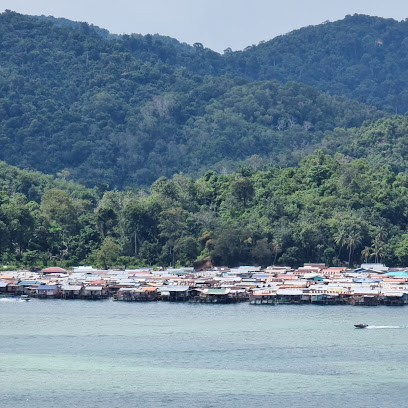
Handicraft Market
Explore the vibrant Handicraft Market in Kota Kinabalu, where local artisans showcase exquisite crafts and delicious street food delights.
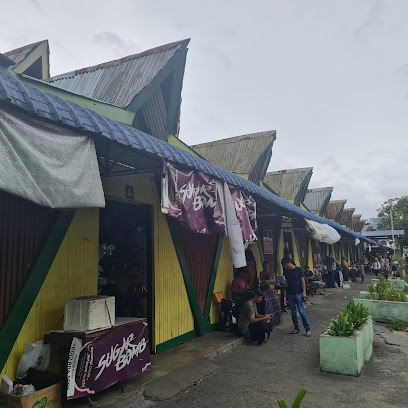
Sabah State Museum
Explore the Sabah State Museum, where Sabah's rich history and diverse cultures come alive through captivating exhibits and serene nature.

Tamparuli Suspension Bridge
Experience breathtaking views and the thrill of crossing the iconic Tamparuli Suspension Bridge in Sabah, Malaysia.
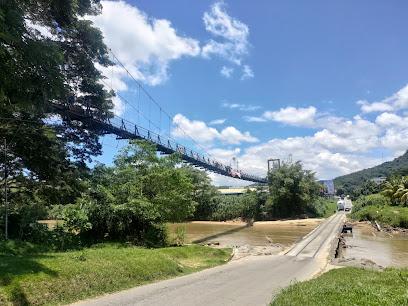
Lok Kawi Wildlife Park
Explore the vibrant wildlife and lush landscapes at Lok Kawi Wildlife Park, a top destination for nature lovers in Sabah, Malaysia.

Tanjung Aru Perdana Park
Experience the beauty and tranquility of Tanjung Aru Perdana Park, a lush oasis in Kota Kinabalu perfect for relaxation, recreation, and stunning sunsets.

Arnab Village Ranau
Discover the charm of Arnab Village Ranau, where adorable rabbits and lush landscapes create an unforgettable animal park experience in Sabah.

Timpohon Gate, Kundasang, Sabah
Explore the majestic Timpohon Gate at Kinabalu Park, a paradise for hikers and nature enthusiasts in Sabah, Malaysia, with breathtaking views and diverse wildlife.

Kokol Hill Elf
Discover breathtaking views and serene landscapes at Kokol Hill Elf, a must-visit tourist attraction in Kota Kinabalu, Sabah.

Bombon Kg. Marakau (Fish Spa)
Discover the unique relaxation of Bombon Kg. Marakau Fish Spa, where nature and rejuvenation converge in picturesque Sabah.

Sosodikon Hill Kundasang
Discover the breathtaking vistas of Sosodikon Hill in Kundasang, a must-visit destination for nature lovers and photography enthusiasts.

Mt Kinabalu Viewing Platform
Experience the breathtaking views from the Mt Kinabalu Viewing Platform, where nature's beauty and adventure await in Sabah, Malaysia.

Sapi Island Kota Kinabalu, Sabah Malaysia
Experience the beauty of Sapi Island in Kota Kinabalu, Sabah, where adventure and nature meet in a stunning tropical setting.
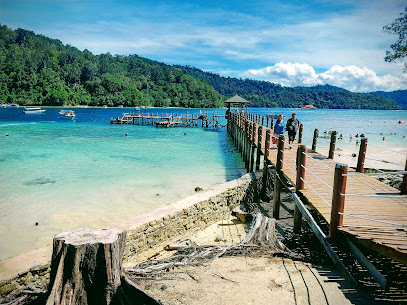
Tunku Abdul Rahman Marine Park
Discover the stunning Tunku Abdul Rahman Marine Park, a tropical paradise of pristine beaches, vibrant marine life, and unforgettable adventures in Sabah, Malaysia.

Double Six Memorial Park
Explore the serene Double Six Memorial Park in Kota Kinabalu, a heartfelt tribute surrounded by nature, perfect for reflection and learning about local history.

Essential places to dine
Fatt Kee Seafood Restaurant
Experience the ultimate seafood feast at Fatt Kee Seafood Restaurant in Kota Kinabalu – where freshness meets flavor in every dish.

Gayang Seafood Restaurant, Sulaman Tuaran, Sabah
Discover authentic Malaysian flavors at Gayang Seafood Restaurant in Sabah – where fresh seafood meets stunning views.
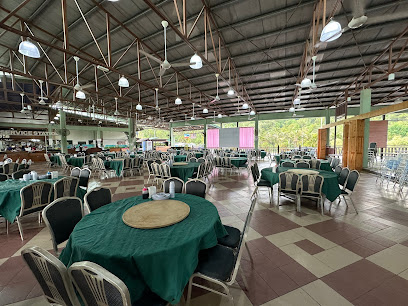
Suang Tain Seafood Restaurant
Discover authentic Sabah seafood at Suang Tain Seafood Restaurant in Kota Kinabalu - where freshness meets flavor.

Mashawi (Sepanggar)
Experience authentic Middle Eastern cuisine at Mashawi in Sepanggar—where flavor meets tradition in every dish.

Alu-Alu Kitchen
Experience authentic Malaysian cuisine at Alu-Alu Kitchen in Kota Kinabalu – where every dish tells a story.

Cherry Club & Restaurant
Savor the best of local and international cuisine at Cherry Club & Restaurant in Kota Kinabalu—where every meal is a celebration.

Woo!
Discover Woo! - An enchanting breakfast and art cafe in Kota Kinabalu where creativity meets culinary delight.

Al Fresco
Experience stunning waterfront dining at Al Fresco in Sutera Harbour with exquisite dishes that celebrate local flavors and breathtaking views.
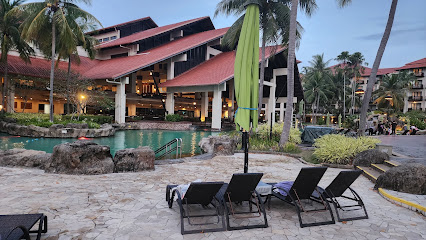
Brass Monkey Cafe & Bar
Indulge in mouthwatering steaks and bistro delights at Brass Monkey Cafe & Bar in Kota Kinabalu's vibrant Lintas Plaza.
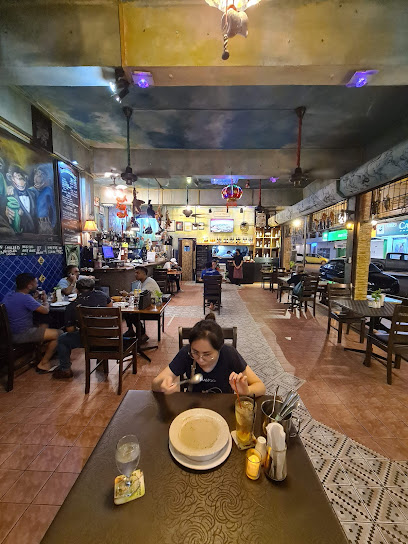
Liwagu Restaurant
Experience authentic local cuisine at Liwagu Restaurant amidst the breathtaking scenery of Kinabalu Park.

La Veranda Cucina Italiana at Sutera Avenue Level 1
Experience authentic Italian cuisine at La Veranda Cucina Italiana in Kota Kinabalu – where every dish tells a story.

Mai Yai Thai Orchid Restaurant
Experience authentic Thai cuisine at Mai Yai Thai Orchid Restaurant in Kota Kinabalu's beautiful waterfront setting.

Mother India Authentic North Indian Restaurant
Experience authentic North Indian cuisine at Mother India Restaurant in Kota Kinabalu's Oceanus Waterfront Mall with vibrant flavors and warm hospitality.

Bagusss Restaurant
Discover the vibrant flavors of Malaysia at Bagusss Restaurant in Kota Kinabalu – where culinary traditions meet modern tastes.

ramenya malaysia
Discover authentic Japanese flavors at Ramenya Malaysia in Kota Kinabalu's vibrant Imago Shopping Mall.

Markets, malls and hidden boutiques
Imago Shopping Mall
Experience a vibrant shopping and dining paradise at Imago Shopping Mall in Kota Kinabalu, featuring a mix of local and international brands.

Centre Point Sabah
Discover the vibrant shopping experience at Centre Point Sabah, where retail, dining, and entertainment come together in Kota Kinabalu.

Suria Sabah
Discover Suria Sabah, your ultimate shopping destination in Kota Kinabalu, featuring diverse stores, delightful dining, and entertainment options.
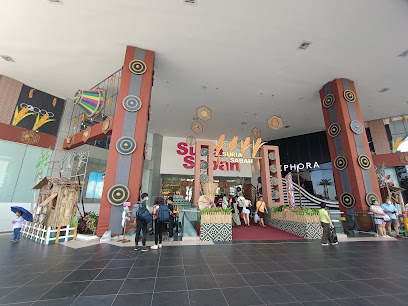
Handicraft Market
Experience the vibrant culture and craftsmanship of Sabah at the Handicraft Market, a must-visit destination in Kota Kinabalu.

Karamunsing Shopping Complex
Discover diverse shopping, dining, and entertainment at Karamunsing Shopping Complex in Kota Kinabalu, Sabah – where culture meets modern retail.

Pasar Besar Kota Kinabalu
Discover the heart of Kota Kinabalu at Pasar Besar, a vibrant market filled with local flavors, fresh produce, and unique crafts.

1 Borneo Mall
Experience the ultimate shopping and entertainment destination at 1 Borneo Mall, the largest shopping complex in East Malaysia.
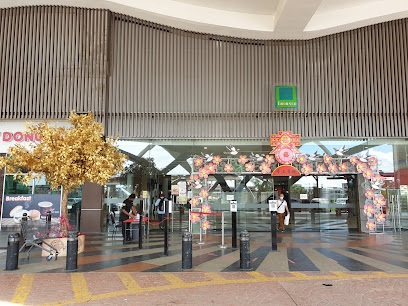
Wisma Merdeka
Explore Wisma Merdeka, a vibrant shopping mall in Kota Kinabalu offering local and international brands, diverse dining options, and family entertainment.

Gaya Street Sunday Market
Experience the vibrant Gaya Street Sunday Market in Kota Kinabalu, where local culture, delicious street food, and unique handicrafts come together.

Kinabalu Park Headquarters
Explore the breathtaking beauty of Kinabalu Park Headquarters, a UNESCO World Heritage Site, and gateway to Mount Kinabalu's stunning ecosystems.

Oceanus Waterfront Mall
Experience shopping, dining, and stunning ocean views at Oceanus Waterfront Mall in Kota Kinabalu – a perfect blend of leisure and retail.

Night Food Market
Discover the vibrant flavors and lively atmosphere at Kota Kinabalu's Night Food Market, a must-visit for food enthusiasts and cultural explorers.

Cocoa Kingdom KK Chocolate House
Discover a chocolate lover's paradise at Cocoa Kingdom KK Chocolate House in Kota Kinabalu, where sweet indulgence meets local charm.

Jamilah Jewellery
Explore exquisite craftsmanship at Jamilah Jewellery, the premier jewelry destination in Kota Kinabalu, Sabah, offering unique designs for every occasion.

Chanteek Borneo Sdn Bhd
Explore the vibrant world of textiles at Chanteek Borneo, a hub for unique fabrics and custom digital printing in Kota Kinabalu.

Essential bars & hidden hideouts
MOGINUM Restobar
Discover the vibrant flavors of Asian fusion cuisine at MOGINUM Restobar, where delightful dishes meet lively nightlife in Kota Kinabalu.

Sunset Bar
Experience breathtaking sunsets and exquisite cocktails at Sunset Bar, the jewel of Shangri-La's Tanjung Aru Resort in Kota Kinabalu.
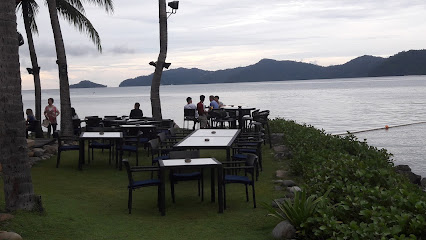
Tamu Rooftop
Discover the stunning views and vibrant atmosphere at Tamu Rooftop in Kota Kinabalu - a perfect blend of cocktails, cuisine, and captivating sunsets.
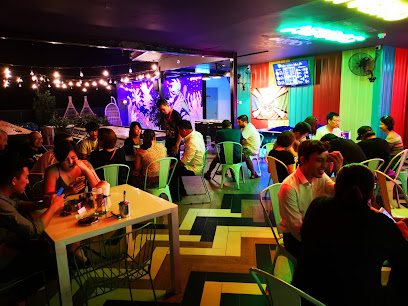
The Other Side Bar 赵老妹
Experience the vibrant nightlife of Tanjung Aru at The Other Side Bar, where expertly crafted cocktails and a lively atmosphere await.

Sky Blu Bar
Experience breathtaking views and delightful cocktails at Sky Blu Bar, the ultimate destination for nightlife in Kota Kinabalu, Sabah.

Bar Flips
Experience a vibrant atmosphere at Bar Flips, Kota Kinabalu's premier destination for cocktails and delicious South American and Western cuisine.

Deus Music Bar
Experience the lively vibes of Deus Music Bar in Kota Kinabalu, where live music meets refreshing drinks for an unforgettable night out.

D'Atas Explorers Tavern
Discover the vibrant flavors of Kota Kinabalu at D'Atas Explorers Tavern, a charming bistro offering a unique dining experience in the heart of the city.

Serendipity Bar & Restaurant
Experience the perfect blend of local flavors and international cuisine at Serendipity Bar & Restaurant in Kota Kinabalu, a true gem for food lovers.

Secret Industry
Experience the vibrant nightlife of Kota Kinabalu at Secret Industry, a bar offering unique drinks and a lively atmosphere perfect for relaxation.

The Club
Experience the vibrant nightlife of Kota Kinabalu at The Club, where affordable drinks and a lively atmosphere await.

Tapai Speakeasy
Discover the hidden charm of Tapai Speakeasy, a sophisticated bar in Kota Kinabalu, known for its exquisite cocktails and inviting atmosphere.

ChillOut Cafe & Bar
Experience the vibrant nightlife of Kota Kinabalu at ChillOut Cafe & Bar, where relaxation meets fun in a lively setting.

Mynt Club
Discover the nightlife at Mynt Club in Kota Kinabalu, where vibrant music, exquisite cocktails, and stunning waterfront views await you.

Rooftop Bar @ Le Méridien
Discover the Rooftop Bar @ Le Méridien, where exquisite drinks meet breathtaking views of Kota Kinabalu's skyline and sunset.

Local Phrases about Kinabalu National Park
-
- HelloHalo
[ha-loh] - GoodbyeSelamat tinggal
[se-la-mat ting-gal] - YesYa
[yah] - NoTidak
[tee-dak] - Please/You're welcomeSila
[see-lah] - Thank youTerima kasih
[te-ree-ma ka-seeh] - Excuse me/SorryMaaf
[mah-af] - How are you?Apa khabar?
[ah-pah kha-bar] - Fine. And you?Baik. Dan awak?
[ba-ee-k. dan ah-wak] - Do you speak English?Boleh bercakap dalam Bahasa Inggeris?
[bo-le ber-tcha-kap da-lam ba-ha-sa ing-ger-ees] - I don't understandSaya tidak faham
[sa-ya tee-dak fa-ham]
- HelloHalo
-
- I'd like to see the menu, pleaseBoleh saya lihat menu, sila
[bo-le sa-ya lee-hat me-nu, see-lah] - I don't eat meatSaya tidak makan daging
[sa-ya tee-dak ma-kan da-ging] - Cheers!Kampai!
[kam-pai] - I would like to pay, pleaseSaya ingin bayar, sila
[sa-ya in-gin ba-yar, see-lah]
- I'd like to see the menu, pleaseBoleh saya lihat menu, sila
-
- Help!Tolong!
[to-long] - Go away!Pergi jauh-jauh!
[per-gee jauh-jauh] - Call the Police!Panggil polis!
[pang-gil po-lis] - Call a doctor!Panggil doktor!
[pang-gil dok-tor] - I'm lostSaya sesat
[sa-ya se-sat] - I'm illSaya sakit
[sa-ya sa-kit]
- Help!Tolong!
-
- I'd like to buy...Saya ingin membeli...
[sa-ya in-gin mem-be-lee] - I'm just lookingSaya hanya melihat-lihat
[sa-ya hun-ya me-li-hat-li-hat] - How much is it?Berapa harganya?
[be-ra-pa har-gan-ya] - That's too expensiveItu terlalu mahal
[ee-too ter-la-loo ma-hal] - Can you lower the price?Boleh kurangkan harga?
[bo-le kur-ang-kan har-ga]
- I'd like to buy...Saya ingin membeli...
-
- What time is it?Pukul berapa sekarang?
[poo-kool be-ra-pa se-ka-rang] - It's one o'clockPukul satu
[poo-kool sa-too] - Half past (10)Setengah (sepuluh)
[se-ten-gah (se-poo-loo)] - MorningPagi
[pa-gee] - AfternoonPetang
[pe-tang] - EveningMalam
[ma-lam] - YesterdaySemalam
[se-ma-lam] - TodayHari ini
[ha-ree ee-nee] - TomorrowEsok
[e-sok] - 1Satu
[sa-too] - 2Dua
[doo-ah] - 3Tiga
[tee-gah] - 4Empat
[em-pat] - 5Lima
[lee-ma] - 6Enam
[e-nam] - 7Tujuh
[too-joo] - 8Lapan
[la-pan] - 9Sembilan
[sem-bee-lan] - 10Sepuluh
[se-poo-loo]
- What time is it?Pukul berapa sekarang?
-
- Where's a/the...?Di mana...
[dee ma-na] - What's the address?Apa alamatnya?
[ah-pah a-la-mat-nya] - Can you show me (on the map)?Boleh tunjukkan saya (di peta)?
[bo-le toon-jook-kan sa-ya (dee pe-ta)] - When's the next (bus)?Bila bas seterusnya?
[bee-la bas se-te-roos-nya] - A ticket (to ....)Sebuah tiket (ke ....)
[se-boo-ah tee-ket (ke)]
- Where's a/the...?Di mana...
History of Kinabalu National Park
-
Mount Kinabalu, the centerpiece of Kinabalu National Park, was formed over millions of years through geological processes. The granitic rock that makes up the mountain was pushed upwards due to tectonic activity, creating the towering peak that stands today at 4,095 meters. This process not only formed one of Southeast Asia's highest mountains but also created diverse habitats that support a wide range of flora and fauna.
-
Archaeological evidence suggests that human activity around Mount Kinabalu dates back thousands of years. The indigenous Dusun and Kadazan people have long inhabited the region, living in harmony with the natural environment. Their traditional practices and deep spiritual connection to the land have played a crucial role in the preservation of the area’s biodiversity.
-
In the 19th century, European explorers began to take an interest in Mount Kinabalu. In 1851, British colonial administrator Hugh Low became the first recorded person to reach the summit. His expedition paved the way for further scientific exploration and documentation of the region’s unique flora and fauna. The mountain’s peak, Low’s Peak, is named in his honor.
-
Kinabalu National Park was established in 1964, becoming Malaysia’s first World Heritage Site in 2000. The park was created to protect the rich biodiversity of the region, which includes over 5,000 plant species, 326 bird species, and more than 100 mammal species. The park's establishment marked a significant step in conservation efforts and has since become a model for other protected areas in Southeast Asia.
-
In December 2000, Kinabalu National Park was designated a UNESCO World Heritage Site. This recognition was due to its exceptional biodiversity and the presence of rare and endangered species. The designation has helped to bolster conservation efforts and raise global awareness about the importance of preserving this unique ecosystem.
-
Mount Kinabalu holds significant cultural importance for the indigenous communities in the region. The mountain is considered sacred, and local legends speak of it being the resting place of spirits. Traditional rituals and ceremonies are often conducted to honor the spirits and seek blessings for safe passage. This cultural heritage adds a rich tapestry of meaning to the natural beauty of the park.
-
Over the years, Kinabalu National Park has become a hub for scientific research. Botanists, zoologists, and ecologists from around the world visit the park to study its unique ecosystems. Additionally, the park has become a popular destination for ecotourism, attracting visitors who are keen to explore its trails, observe its wildlife, and experience its natural beauty while supporting conservation efforts.
Kinabalu National Park Essentials
-
Kinabalu National Park is located in the Malaysian state of Sabah on the island of Borneo. The closest international airport is Kota Kinabalu International Airport (BKI), which is approximately 90 kilometers from the park. From the airport, you can take a taxi, bus, or rent a car to reach the park. The journey by road typically takes around 2 hours. There are also shuttle services and tour operators that offer transportation to the park.
-
Within Kinabalu National Park, transportation options include walking, guided tours, and shuttle services provided by the park. For exploring the surrounding areas, local buses and taxis are available. Car rentals are a convenient option if you prefer to explore at your own pace. Make sure to check the availability of parking spaces at your chosen accommodations.
-
The official currency in Malaysia is the Malaysian Ringgit (MYR). Credit cards are widely accepted in hotels, restaurants, and larger shops within and around the park. However, it is advisable to carry some cash for small purchases and in rural areas where card payments may not be available. ATMs are available in Kota Kinabalu, so consider withdrawing sufficient cash before heading to the park.
-
Kinabalu National Park is generally a safe destination for tourists. However, it is important to take standard precautions. Avoid leaving your belongings unattended and be cautious in crowded areas. While the park itself has a low crime rate, always be vigilant. If exploring nearby areas, avoid walking alone at night and stay in well-populated areas.
-
In case of an emergency, dial 999 for immediate assistance in Malaysia. The park has its own ranger stations and medical facilities to handle minor injuries or health issues. It is recommended to have travel insurance that covers medical emergencies and evacuation. For serious medical emergencies, the closest hospital is in Kota Kinabalu.
-
Fashion: Do wear comfortable and weather-appropriate clothing. Layering is advisable due to fluctuating temperatures. Avoid wearing revealing clothing. Religion: Do respect local customs and traditions. When visiting religious sites, dress modestly and remove your shoes before entering. Public Transport: Do be courteous and offer your seat to elderly passengers. Don’t smoke or litter. Greetings: Do greet people with a smile and a slight nod. Handshakes are common but not mandatory. Eating & Drinking: Do try local foods and respect dining etiquette. Don’t waste food, as it is considered disrespectful.
-
To experience Kinabalu National Park like a local, join a guided walk led by park rangers who can provide in-depth knowledge about the flora and fauna. Visit local markets in Kundasang to buy fresh produce and handmade crafts. Engage with locals, who are friendly and willing to share tips about the best hiking trails and viewpoints. Don’t miss visiting the nearby Poring Hot Springs for a relaxing dip.
Trending Landmarks in Kinabalu National Park
-
Tanjung Aru Beach
-
Masjid Bandaraya Kota Kinabalu
-
Poring Hot Spring
-
Kundasang War Memorial
-
Sabah State Museum
-
Lok Kawi Wildlife Park
-
Teluk Likas Beach
-
Crocker Range National Park
-
Mari Mari Cultural Village
-
Sabah State Mosque
-
Kinabalu Park Headquarters
-
Upside Down House Sabah
-
Kinabalu GeoPark
-
Tanjung Aru Perdana Park
-
Taman Awam Teluk Likas, Kota Kinabalu, Sabah.
Nearby Cities to Kinabalu National Park
-
Things To Do in Sandakan
-
Things To Do in Muara
-
Things To Do in Bandar Seri Begawan
-
Things To Do in Bangar
-
Things To Do in Jerudong
-
Things To Do in Tutong
-
Things To Do in Seria
-
Things To Do in Kuala Belait
-
Things To Do in Miri
-
Things To Do in Palawan
-
Things To Do in Puerto Princesa
-
Things To Do in Zamboanga City
-
Things To Do in Balikpapan
-
Things To Do in Kuching
-
Things To Do in Boracay










